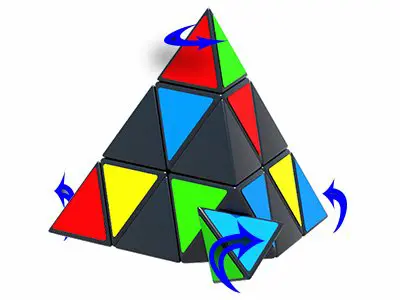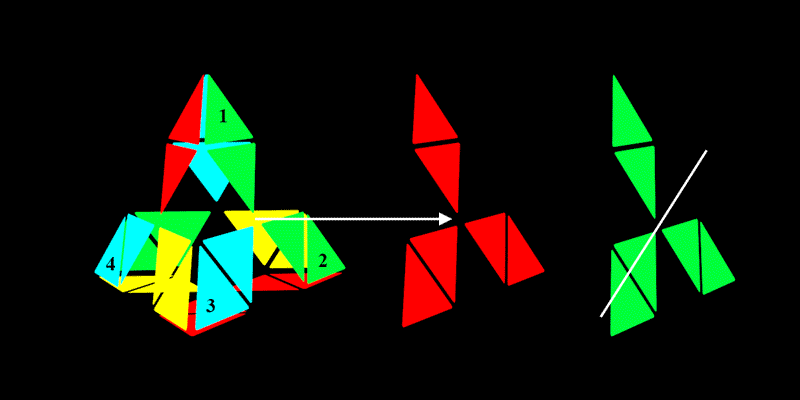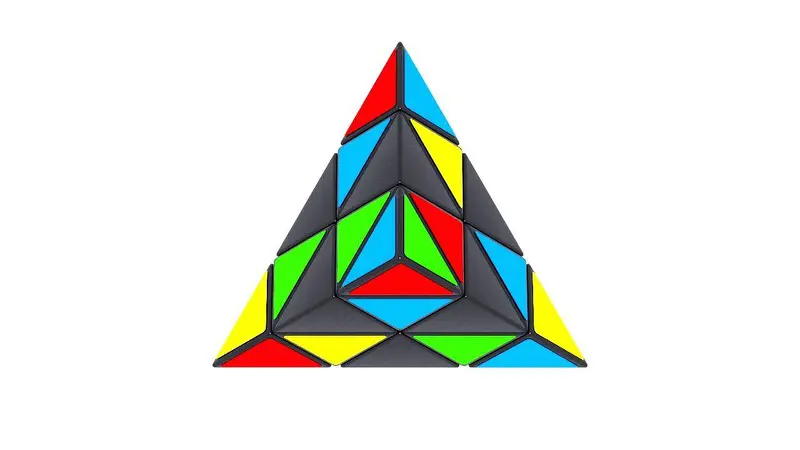Solving the Pyraminx
The Pyraminx is a tetrahedron formed in the style of the Rubik's Cube. Solving the Pyraminx is considered the easiest, fastest solving with as few rotations as possible. Solving the Pyraminx is a part of the world competitions organized by World Cube Association, and the following instructions are guidelines so that you can understand the Pyraminx better and do your first solving.
Step 1: the rotations of tips
This is a very simple step, the tips are to be rotated and paired (unless they already are) with the colors of the central pieces - there are no algorithms to be followed – all is done intuitively.

There, now we have solved 4 out of 14 parts of the Pyraminx. From now on, all the future rotations follow the central parts, and the tips follow them!
Paired by color, the tip and the central part next to it form the Pyraminx diamond.
Step 2: the "Mitsubishi" logo
The goal is to form the one-color "Mitsubishi" logo on all the faces of the Pyraminx. The point is to successfully form this logo on at least one face of the Pyraminx, and the other three faces will be easily solved by the rotation of the fourth diamond.
It all comes down to using your intuition, with no algorithms to follow.
Take a good look at the following image! You may think that the two diamonds are completely solved and that all you have to do is to turn to the third one, but...

You are now faced with two options (unless one of the faces has an already formed "Mitsubishi" logo):
а) on the face that you want to solve, you can find the same color that appears on all three angles of that face and then you rotate the diamonds to pair the color, or...
b) you simply decide that you want to pair, for example, the yellow color first, then you find the three yellow angles and rotate these diamonds toward the face that these angles belong to.
By rotating the fourth diamond you will solve the other three faces.
The following video shows an example of solving the steps 1 and 2:

This results in solving 8 parts of the Pyraminx and we are left with 6 more two-colored side parts.
Next step №. 3 - Learn to solve the first layer of the Pyraminx